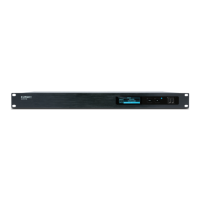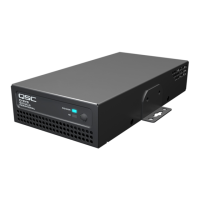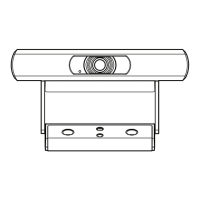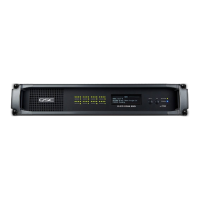12
TD-000520-00-A
Front Panel OLED Screens
Design Status
• Device – The name of the I/O-8 Flex as defined in Q-SYS
Designer.
• Design – The name of the currently running design.
• Status – Indicates health of the I/O-8 Flex in design:
OK – Audio is good, hardware is good.
Compromised – Audio is good but a redundancy mechanism
is active (one LAN down but the other is still up) or a non-fatal
hardware problem exists (temperature higher than expected, etc.)
Fault – Audio is not passing, or hardware is malfunctioning or mis-configured.
Missing – A piece of hardware, defined in the design, has not been discovered. Audio is not passing through that
piece of hardware.
Initializing – Starting the firmware, configuration update, or design update.
Not Present – A virtual component in the design, that is designated as Dynamically Paired, and Not Required, has no
hardware assigned to it.
System Status
• Firmware – A three-section number identifying the major
release, minor release, and maintenance release. For
example, 6.0.0.
• Temp – The current chassis temperature of the peripheral.
LAN A
You can edit this information in the Q-SYS Configurator.
• Static or Auto – Displays next to LAN A, indicates if the
peripheral's
IP Address is Static or Automatic.
• IP Address –
The IP Address assigned to the peripheral's
LAN A. LAN A is the primary Q-LAN connection and is required
.
• Net Mask – The Net Mask assigned to the Core.
• Gateway – The Gateway assigned to the Core.
LAN B
LAN B is used for redundancy, and is not required. The
information is displayed in the same format as LAN A.
DEVICE:
DESIGN:
STATUS:
DESIGN STATUS
<Device Name>
<Design Name>
<Status>
FIRMWARE:
TEMP:
SYSTEM STATUS
<rmware number>
<temperature in Celsius >
IP ADDRESS:
NET MASK:
GATEWAY:
LAN A (STATIC)
<IP Address of the I/O-8Flex>
<Net Mask of the I/O-8Flex >
<Gateway for the I/O-8Flex>

